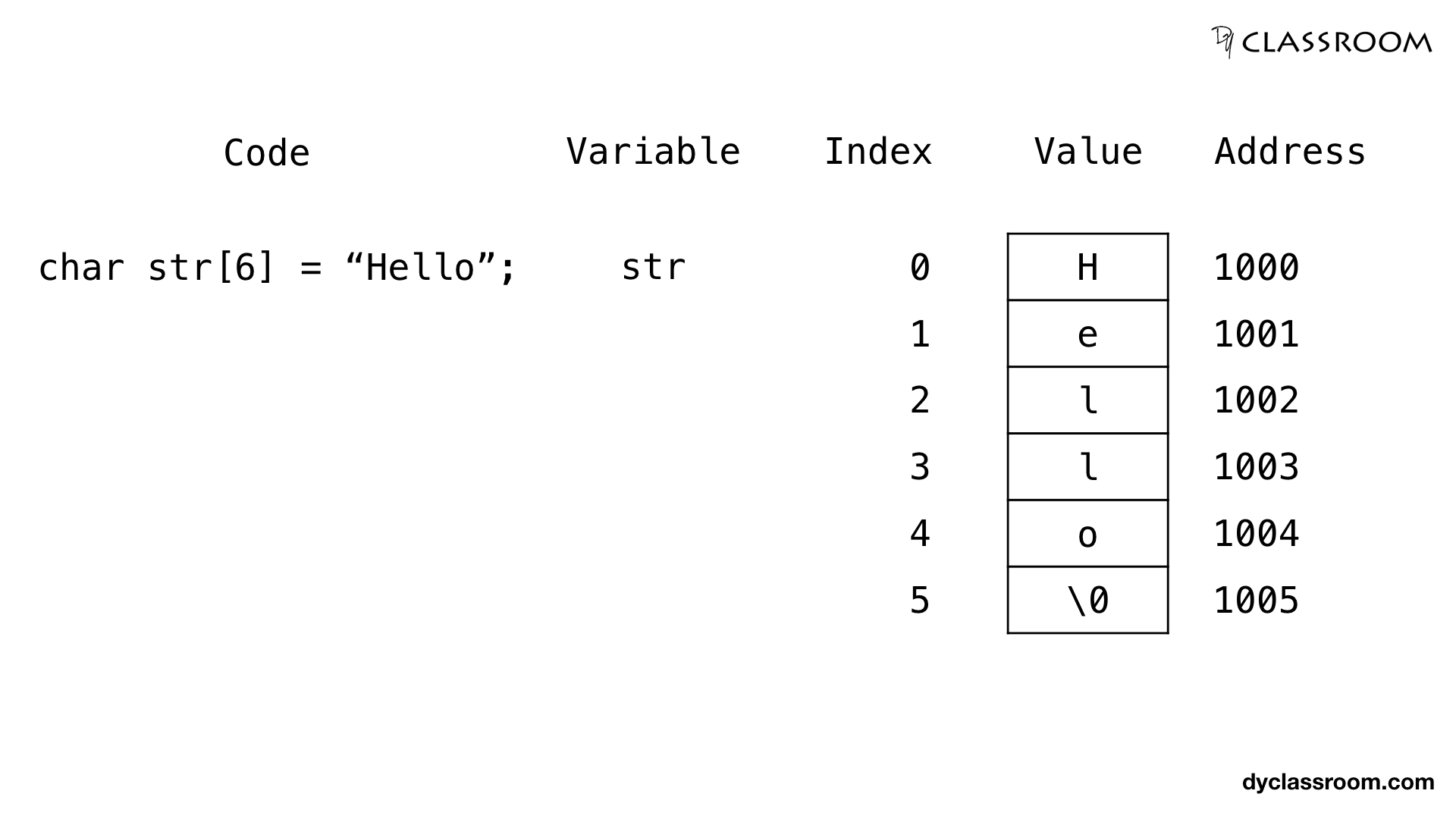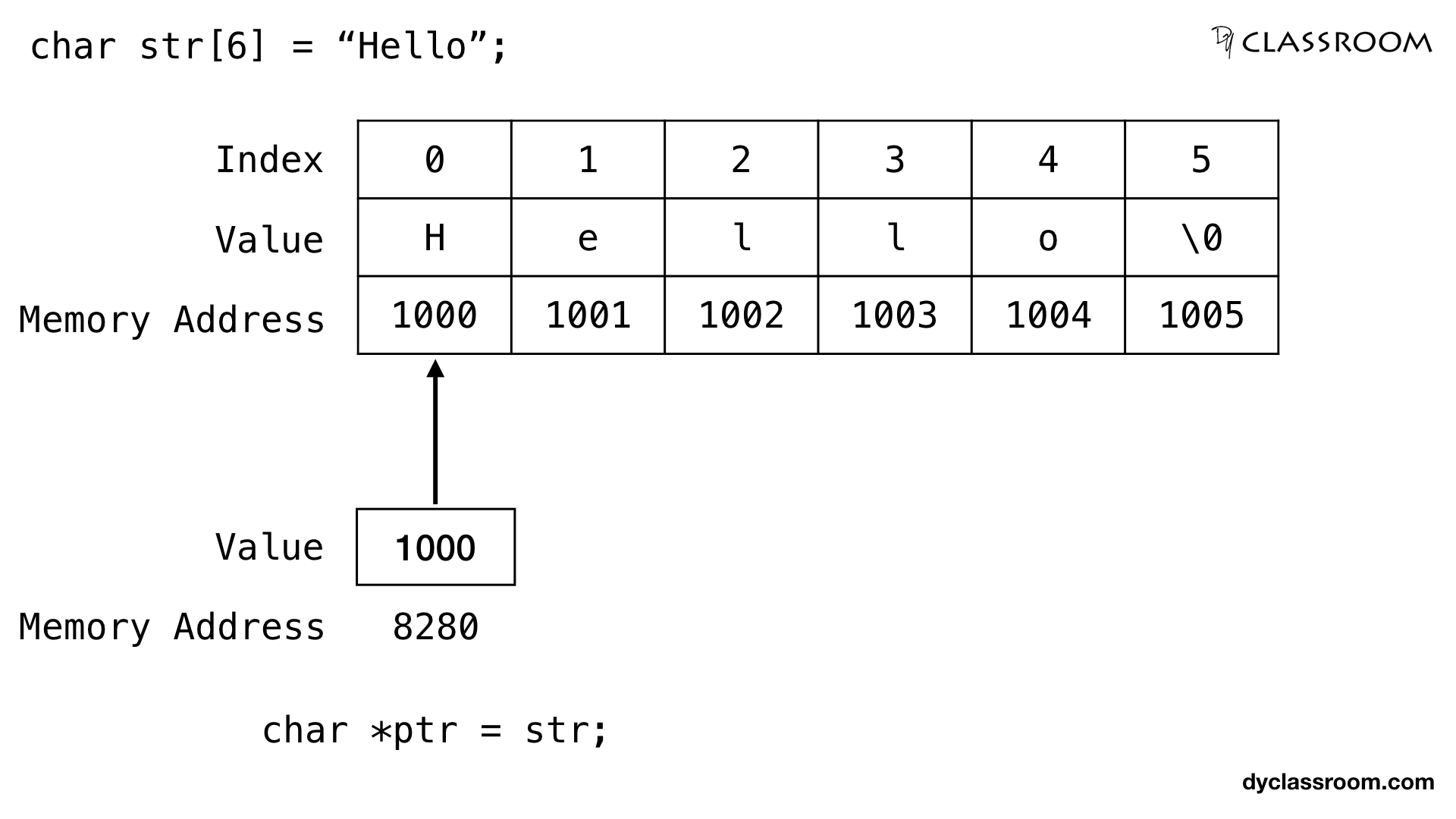
C - Pointers and One Dimensional Array
C Programming

In this tutorial we will learn to work with one dimensional arrays using pointers in C programming language.
We have already learned about how to work with arrays in the Arrays tutorial. So, let us use that knowledge and add pointers to it.
Create the one dimensional array
To keep things simple we will start by creating an one dimensional character char array of size 6.
// 1D char array
char str[6] = "Hello";
Three things happens when we create the array.
- 6 blocks of memory locations is allocated for the array.
- The characters of the array are stored in that 6 blocks of memory.
- The variable name
strpoints at the first location of the allocated memory locations of the array.

In the above image we have the one dimensional character array of size 6 and the memory locations of each element of the array.
Print the elements of the one dimensional array
First we will using the array index and for loop to print the elements of the array.
We will keep printing the characters till we hit the \0 null character which marks the end of the string.
int i;
char str[6] = "Hello";
for (i = 0; str[i] != '\0'; i++) {
printf("%c\n", str[i]);
}
Creating pointer variable for the one dimensional array
We will create a character pointer ptr variable that will hold the address of the character array str.
// array
char str[6] = "Hello";
// pointer
char *ptr = str;
Note! Array variable points at the beginning address of the allocated memory locations for the array.
In the above code we are storing the beginning address of the array str in the pointer variable ptr. So, ptr points at the array str.

Incrementing pointer variable
When we increment the pointer variable it points to the next memory location based on the size of the data type.
So, ptr character pointer variable is pointing at the first memory location of the one dimensional character array str.
And char data type is of size 1 byte. So, if the first memory location is 1000 and ptr is initially pointing at that memory location then ptr++ will make the ptr variable point at 1001 memory location.
Similarly, if a pointer variable is of data type int and lets say the size of integer is 2 bytes then, if the pointer is initially pointing at the memory location 1000 then after incrementing its value using the ++ operator it will point at the next memory location 1002 holding the next integer data.
Printing the one dimensional array elements via pointers
We have stored the beginning address of the one dimensional character array str in the character pointer variable ptr.
Now, using the ++ increment operator we will access the elements of the array.
// char array
char str[6] = "Hello";
// pointer
char *ptr = str;
// print the characters
while(*ptr != '\0') {
printf("%c\n", *ptr);
ptr++;
}
Complete code
#include <stdio.h>
int main(void) {
// character array
char str[6] = "Hello";
// pointer ptr
// pointing at the character array str
char *ptr = str;
// print the elements of the array str
while (*ptr != '\0') {
printf("%c\n", *ptr);
// make the pointer ptr point at the
// next memory location
ptr++;
}
printf("End of code\n");
return 0;
}
Output:
H
e
l
l
o
End of code
Address mapping
To get the ith element of the one dimensional array we can use the following formula.
arr[i] = baseAddress + (i x size_of_data_type)
Where, baseAddress is the starting address of the array.
size_of_data_type is the size of the data type.
Example, if we are using char type then, size is 1 byte. If we are using int type then, size is 2 byte.
If we consider the one dimensional character array str of size 6.
Then, baseAddress = 1000 and size_of_data_type = 1
// address of 0th index element of str
str[0] = baseAddress + (i x size_of_data_type)
= 1000 + (0 x 1)
= 1000
// address of 1st index element of str
str[1] = 1000 + (1 x 1)
= 1001
// address of 5th index element (last element) of str
str[5] = 1000 + (5 x 1)
= 1005
ADVERTISEMENT